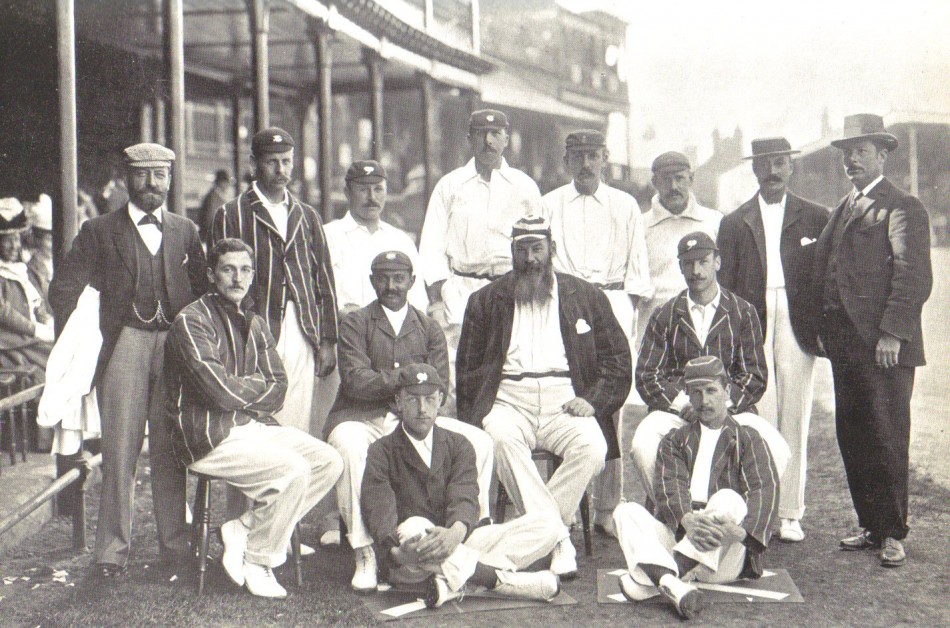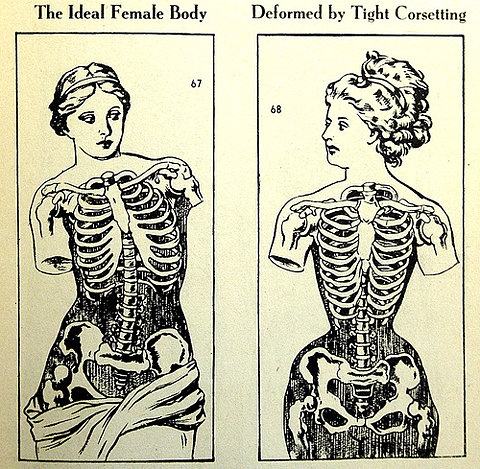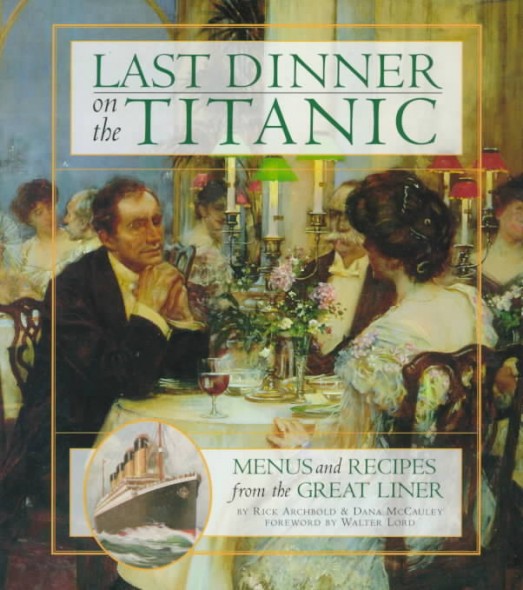
William Gilbert “W. G.” Grace, considered by many to be the finest cricketer in history, contributed to Badminton Library of Sports and Pastimes Series with an article on the proper outfit for playing cricket.
Amongst cricketers generally opinions are many and divided as to this or that particular style of batting and bowling, but sound them upon the materials necessary for the outfit of a player, and you will find as a rule that perfect unanimity prevails. I have very seldom met with a cricketer of eminence who did not take the greatest care in the choice of a bat, pads, or gloves, or who did not impress upon his tailor the momentous importance of comfortably fitting clothes.
It is advisable for the sake of health and comfort that he should wear flannel or woollen material next his skin. It was no unusual sight ten or twenty years ago to find an eleven or county twenty-two dressed in all the colours of the rainbow. White is now usually worn, and it certainly looks better and cooler than any other colour. Shirts should be made to fit easily at the shoulders, but not too loosely. They should also be made large at the neck, as nothing is more disagreeable on a hot day than a shirt which is too small round the throat.
The best material for trousers is white flannel or cloth manufactured for the purpose; I like cloth the best, and nearly always have my trousers made of it, as it does not shrink so much in washing, and that is a very important consideration if you play right through the season, from May to September. Braces are not worn when playing cricket, so there is no need to have buttons for them on your trousers; a strap and buckle at the back should be used instead. The straps should be made so that the buckle can be removed when washing is necessary, as the buckle is very likely to stain and cut the trousers if left on. Do not forget loops at the side for scarf or belt to go through. Many of the old cricketers used to wear belts to keep their trousers from slipping down; I prefer a scarf, as it looks better and will grip quite as firmly, and you will not run the risk of being given out caught at the wickets through the handle of the bat coming in contact with the buckle of the belt.
Caps I think indispensable and preferable to any kind of hats, unless in very hot weather under a broiling sun, when some protection to the neck and back of the head is necessary. Most of the leading clubs and counties have a distinguishing colour of their own, and cricketers generally wear caps made of this colour.
Jackets and jerseys, or ‘sweaters.’ as they are commonly called, have their place in the outfit of a cricketer. A jacket on a hot day is useful when one is not actually engaged in the game; special attention should be given to its colour and pattern—very often it is made of the same flannel and shade as the cap, and when well chosen forms a very pleasing contrast to the white of the trousers. It can be used when fielding, but certainly not when batting or bowling. A jersey or sweater is preferable; it fits closer to the body, is much pleasanter, and in the field on a very cold day it helps to keep you warm, which is necessary for smartness and comfort. Always carry it in your bag, for a hot and fine morning may be followed by a cold or wet afternoon.
Experienced cricketers know that the most trying thing during the season is to keep the feet from getting sore and blistered; if they become so, much of the pleasure of the game is gone; therefore everyone who wishes to be comfortable should wear thick woollen socks, and always have an extra pair or two in the bag when travelling about. They are better made plain, not ribbed, and in natural colours they are more comfortable and do not mark the feet.
Cricket boots or shoes must be worn. To prevent slipping, it is necessary to wear spikes or nails in your boots or shoes. [S]pikes are very convenient, as when they wear down short they can be taken out and new ones easily put in. Nails are used by some cricketers; they are of different sizes and shapes, but large square-headed ones hold best. I should advise all cricketers who play often to have two pairs of boots, one with short spikes or nails which will hold and prevent slipping on a hard dry ground, and the other with longer spikes for a soft wet spongy ground.
Pads were not worn in the early days of cricket, and although I have seen a few first-class cricketers who never use them, at the present time I cannot call to mind anyone who plays without them. It is much safer to wear them, and when they are properly made and fit well they but slightly affect the freedom of the legs. The sense of confidence that comes from wearing them more than makes up for the slight loss of freedom. At first [pads] were fastened with pieces of tape wound round the leg and tied; then came india-rubber or elastic straps with hooks, and finally the present arrangement of buckle and strap, which meets with general approval. Some makers of the present day have them fastened by loops and a long strap lacing up the back of the leg. When choosing pads see that they are exactly your size and fit well, for large, heavy, and uncomfortable pads will do as much to tire you out in a long innings as hard hitting.
Batting gloves are of the highest importance, and players should accustom themselves to wear them as soon as they begin to play regular cricket, or very possibly they may have to use them on some important occasion and will feel all abroad when wearing them for the first time. Gloves are generally made of leather, with strips of thick fluted india-rubber sewn on the back to protect the fingers and hand. When purchasing gloves be careful to see that the rubber is stout enough to resist the blow when the ball hits your hand or fingers, or you might just as well do without gloves altogether. See that the rubber on the fingers of the right-hand glove comes down slightly over the tops of the fingers, and on the side of the thumb instead of the back. Just remember that the side of the thumb, and not the back of it, is towards the bowler when you are batting.
Gloves are generally fastened at the wrist by a band of elastic sewn on the top and buttoned. You can fasten them by a band of elastic without a button, or have the thumb separated from the body of the glove and sewn on to a piece of elastic, the other end of which is fastened to the back of the glove, and long enough to pass once round the wrist; this contrivance will keep the glove well in its place.
And now, having described the materials necessary to complete a cricketer’s outfit, the only thing required is a suitable bag in which to put them. One made of good leather is preferable to any other sort. Mind you have it large enough to hold everything you can possibly require. Have a strong lock and key for it, and straps as well. Have your name inscribed on the brass round the lock, and your initials painted in plain bold letters on the side. In the hurry of hand-shaking and bustle to catch a train the wrong bag has been often taken for want of this simple precaution.
— Cricket (1890)
For more information on W.G. Grace, here’s a short documentary of his life and times:




I recognized W. G. Grace immediately! *is Indian*